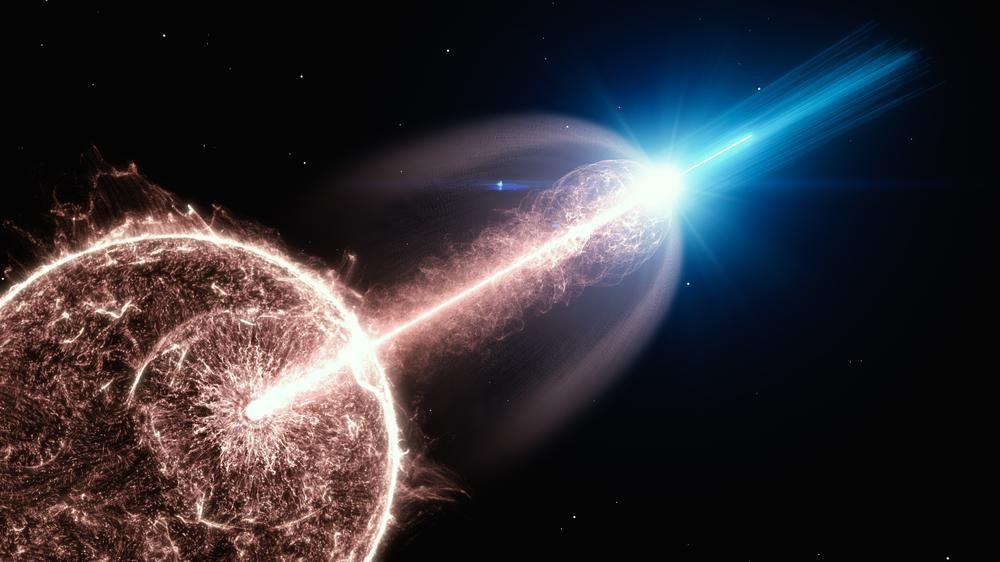Focus
gamma rays
Tons of Dark Matter Hide in Nearby Dwarf Galaxy
By measuring the mass of a nearby dwarf galaxy called Triangulum II, researchers may have found the highest concentration of dark matter in any known galaxy.
|
Will the Search for Dark Matter End With This Galaxy?
A newly discovered dwarf galaxy orbiting the Milky Way appears to be radiating gamma rays—a sign that dark matter may be lurking at the galaxy’s center.
|

|
NASA’s Fermi Mission Brings Deeper Focus to Thunderstorm Gamma-Rays
Each day, thunderstorms around the world produce about a thousand quick bursts of gamma rays, some of the highest-energy light naturally found on Earth. By merging records of events seen by NASA’s Fermi Gamma-ray Space Telescope with data from ground-based radar and lightning detectors, scientists have completed the most detailed analysis to date of the types of thunderstorms involved.
|
Black Hole ‘Lightning’ Seems to Defy Laws of Physics
A perplexing gamma ray burst that seemed to move across a supermassive black hole faster than the speed of light, and in a recent paper scientists tried to figure out what was actually happening.
|
Gamma Rays Pour Out of Exploding Star
A new discovery offers clues to the creation and origin of gamma rays, the highest-energy form of radioactive waves known in the universe.
|
Tons of Dark Matter Hide in Nearby Dwarf Galaxy
By measuring the mass of a nearby dwarf galaxy called Triangulum II, researchers may have found the highest concentration of dark matter in any known galaxy.
|
Will the Search for Dark Matter End With This Galaxy?
A newly discovered dwarf galaxy orbiting the Milky Way appears to be radiating gamma rays—a sign that dark matter may be lurking at the galaxy’s center.
|

|
NASA’s Fermi Mission Brings Deeper Focus to Thunderstorm Gamma-Rays
Each day, thunderstorms around the world produce about a thousand quick bursts of gamma rays, some of the highest-energy light naturally found on Earth. By merging records of events seen by NASA’s Fermi Gamma-ray Space Telescope with data from ground-based radar and lightning detectors, scientists have completed the most detailed analysis to date of the types of thunderstorms involved.
|
Black Hole ‘Lightning’ Seems to Defy Laws of Physics
A perplexing gamma ray burst that seemed to move across a supermassive black hole faster than the speed of light, and in a recent paper scientists tried to figure out what was actually happening.
|
Gamma Rays Pour Out of Exploding Star
A new discovery offers clues to the creation and origin of gamma rays, the highest-energy form of radioactive waves known in the universe.
|





